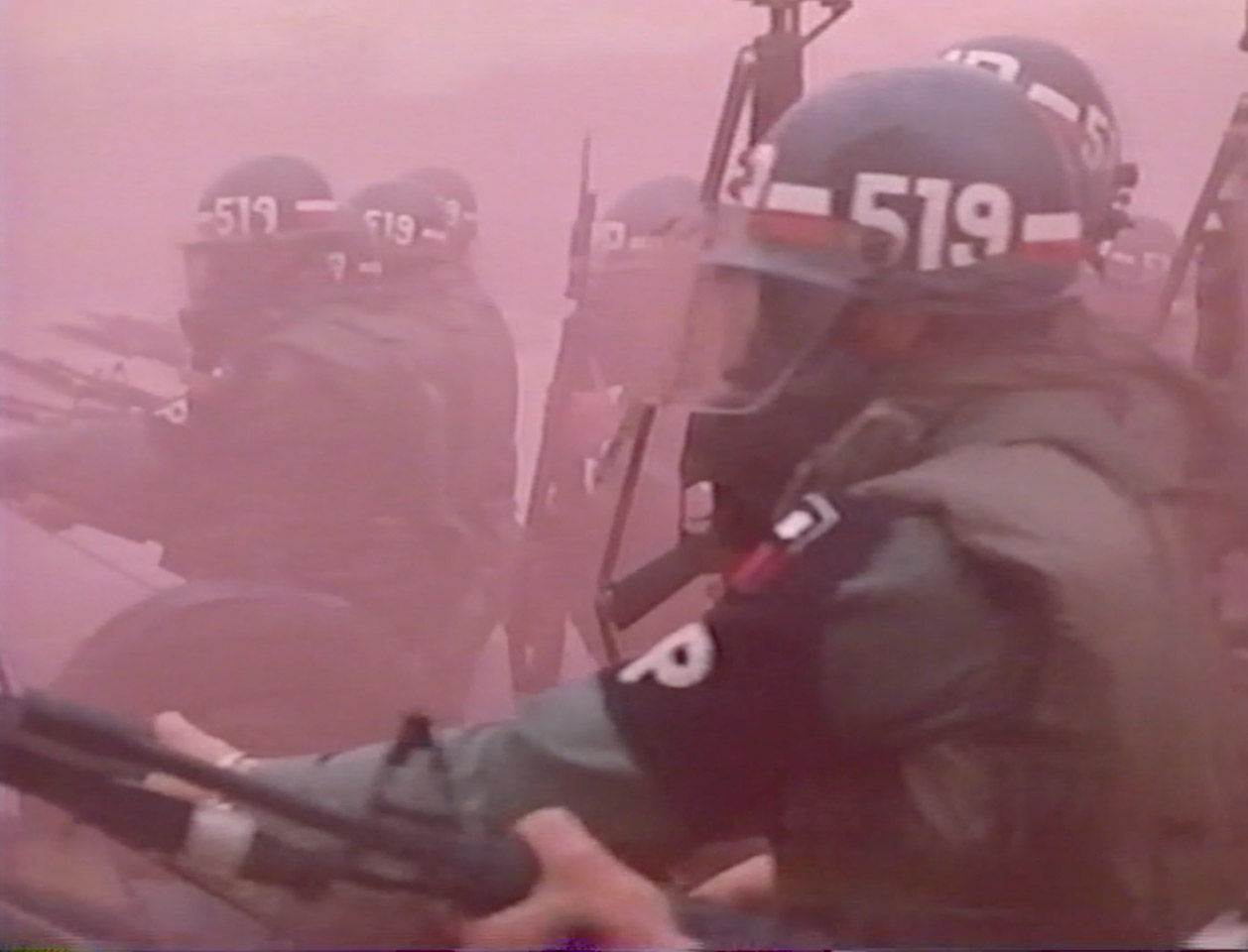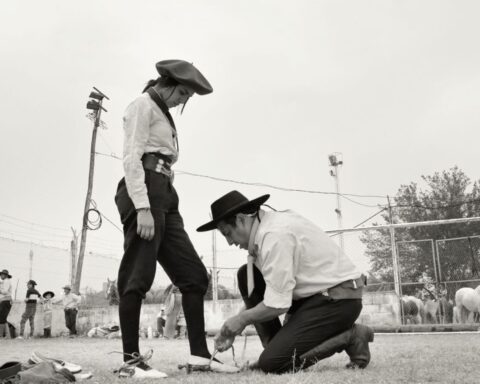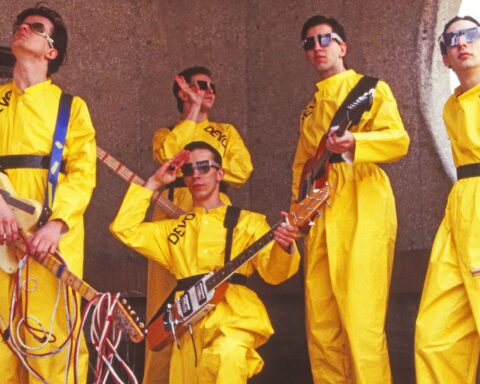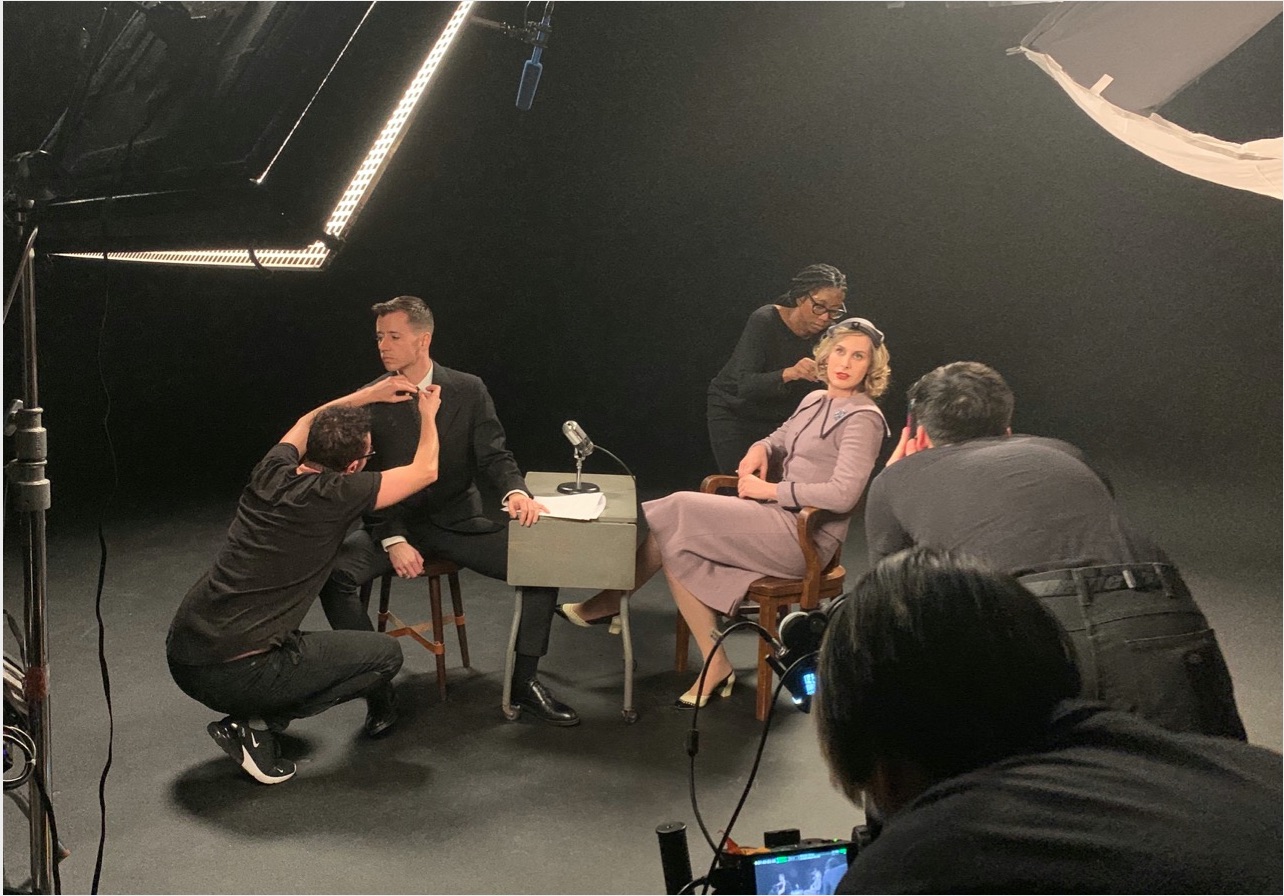Riotsville, U.S.A.
(USA, 91 min.)
Dir. Sierra Pettengill
Programme: Next (World Premiere)
In the late 1960s, American cities were literally on fire. While the South confronted the dissipation of Jim Crow-era modes of repression using water cannons, dogs, and wooden bats, far more insidious modes of violence took place on the other side of Mason-Dixon line. The result was uprisings that were a combination of political action and personal rage. They scared the shit out of the establishment.
Director Sierra Pettengill, a documentarian and archivist with experience working for likes of Jim Jarmusch, has uncovered a treasure trove of public materials that showcase the reaction of the American government. As an attempt to train civilian and military police to deal with these uprisings, they established mock cities. Built like film facades, they provided pantomime policing to a rapt audience of uniformed (mostly) older white men, beaming with joy as they witnessed marching men sternly diffuse unrest.
The surrealism of watching the residents of Riotsville, U.S.A. scream about oppression cannot be overstated. With crudely made placards and awkwardly assembled civilian garb (all the “protesters” were themselves military), the exercise resembles children playing with toy soldiers, essentially dehumanizing the players while at the same time radically simplifying the causes and motivations of those they’re meant to police.
Pettengill wisely uses this footage in contrast with the actual events that caused the backlash, illustrating effectively how specific assumptions and prejudices about group behaviour can have real world consequences. Every training episode illustrated a sniper situation, and while the notion of a person in a bell tower mowing down civilians wasn’t unheard of (think Charles Witman in 1966), it’s fascinating to witness how that fear directly resulted in civilian deaths because of assumptions born in part through these training procedures.
It’s impossible to see these images without correlating with contemporary police responses, and the complexity of the situation. The reaction of officers during the BLM protests was shaped by the enforcement culture birthed at these Riotsville proceedings. At the same time, however, one sees the inadequacy of response and sheer brutality of those engaged in unrest both on the city streets and on the steps of the U.S. Capitol.
While there’s a clear demarcation between the gormlessness of a militarized police force and the righteous rage of the oppressed, Riotsville never devolves into simplicity or polemic. You can absolutely understand the state’s response on a simple pragmatic level, even when recognizing not only the brutality but also the inefficiency of what’s being paraded.
The scope of the film also goes well beyond the preparation for violence. Even more remarkable, perhaps, is the extensive use of footage from the Republican convention of 1968 that elected Nixon to lead the party. In contrast to the much more remembered Democratic debacle in Chicago, in Miami there were also moments of lawful protest that were brutally suppressed while the cameras rolled. The historical connection between the rise of the “silent majority” and the reshaping of police as military response, all within the context of the Vietnam War, is stunning. Balanced between newscasters nattering to fill time with people bleeding on the streets out of view from those cloistered in the convention is wild to witness. The film does an extraordinary job in recontextualizing this entire era through this new lens.
The result is a compelling and surreal film that’s at once a documentation of the past, a roadmap to how we got to where we are now, and a continuing cautionary tale. Beyond the fake storefronts there are real people, real skulls that are smashed, and real lives that are upended. Seen through this vintage footage, it can all feel as artificial as the plaster and wood signs denoting Everytown businesses. However, never has the fakeness of Riotsville, U.S.A. felt so very real to this day.
Riotsville, USA premiered at the 2022 Sundance Film Festival.














